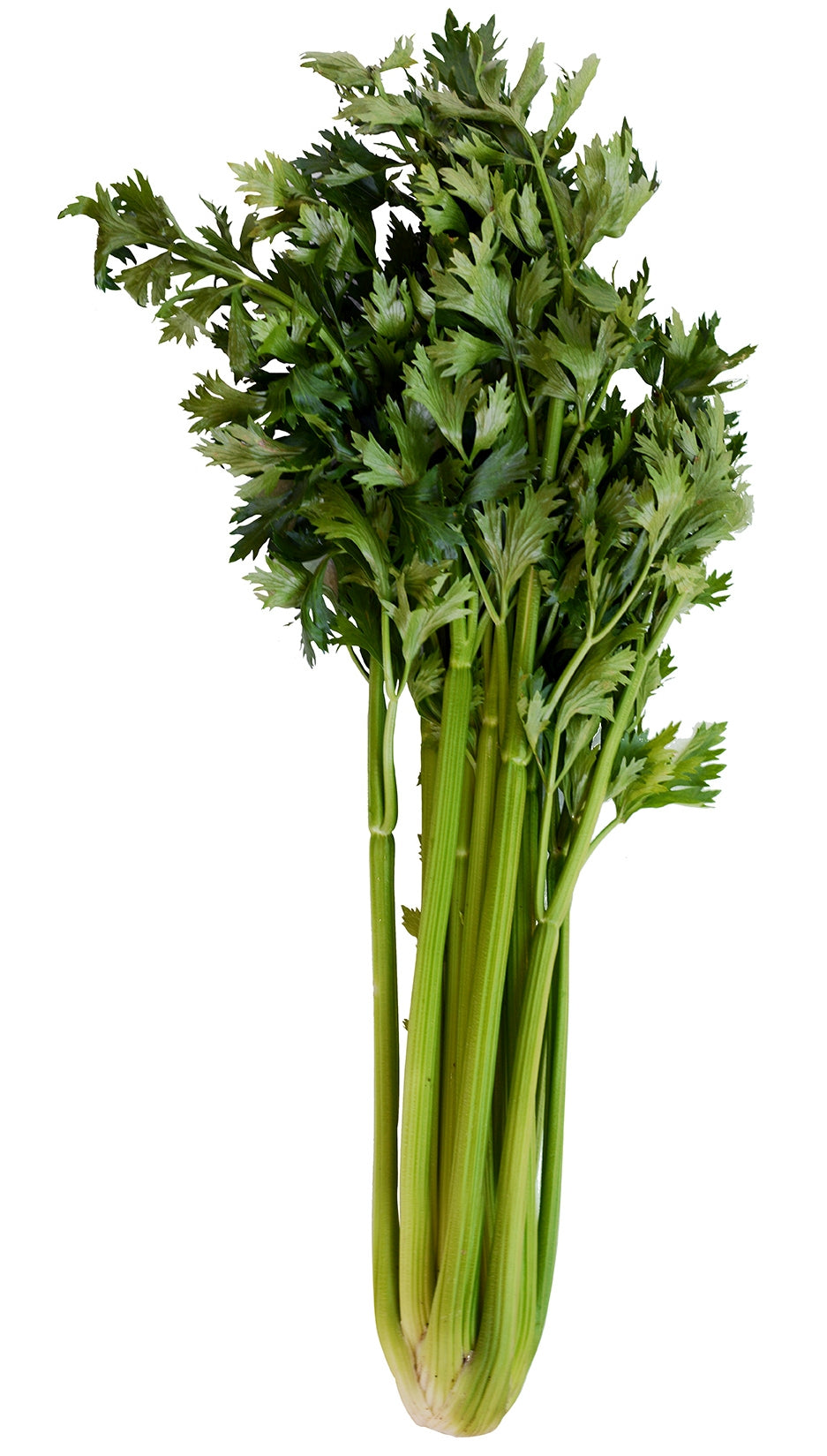
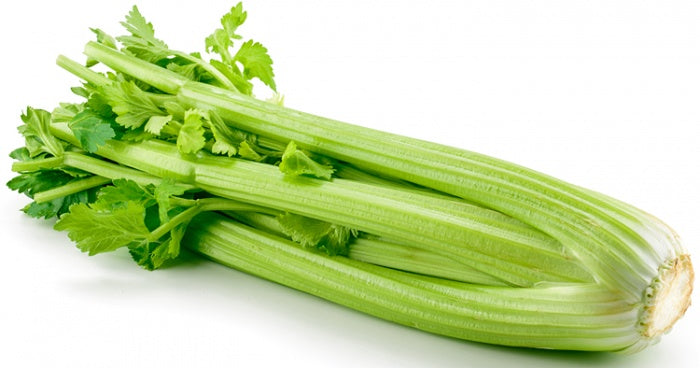
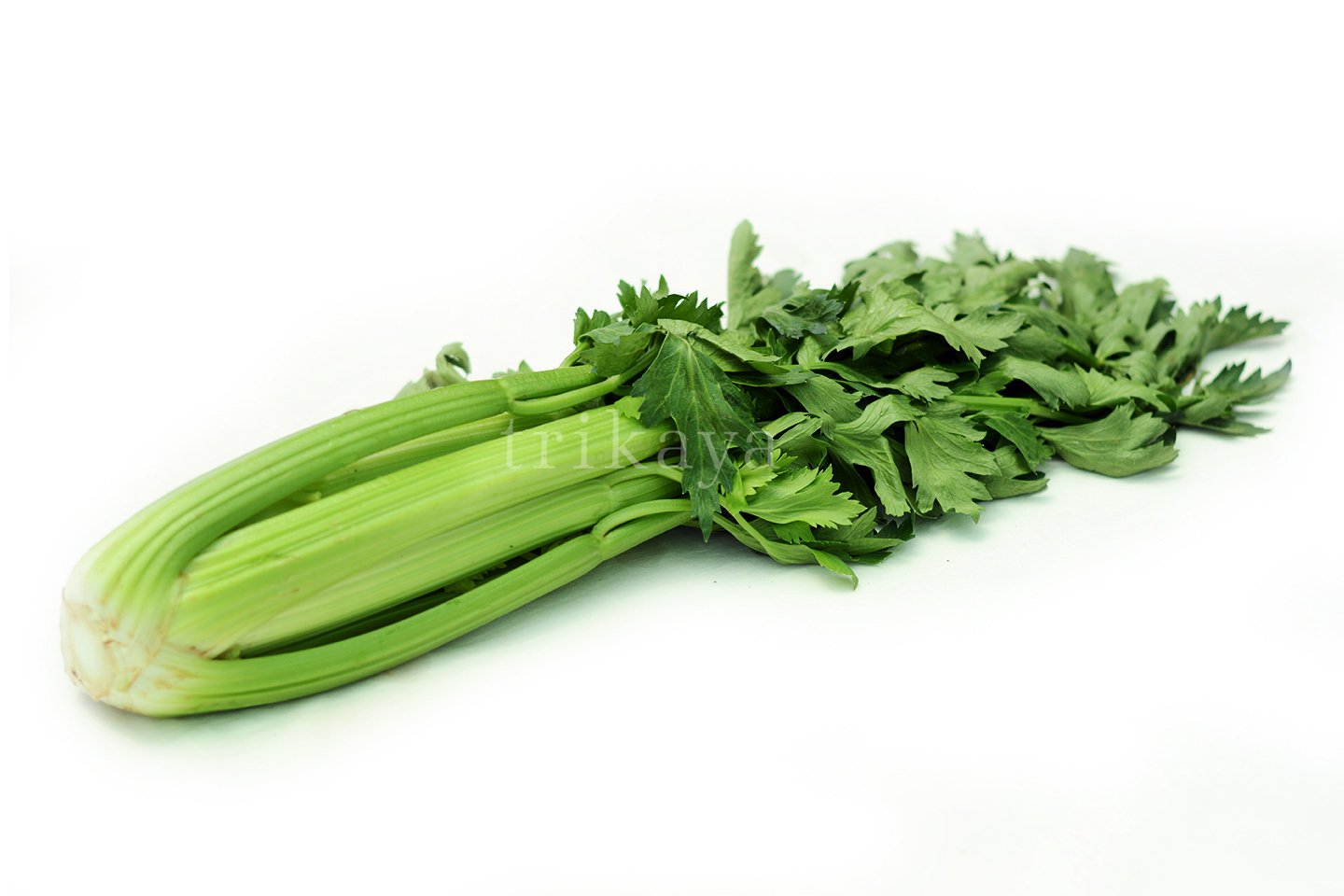
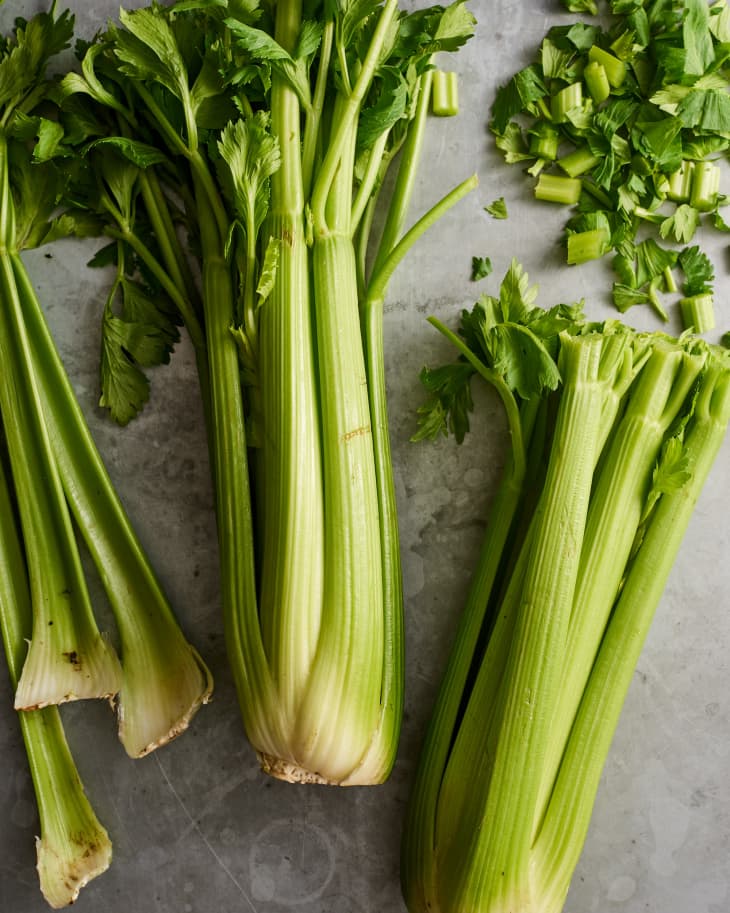
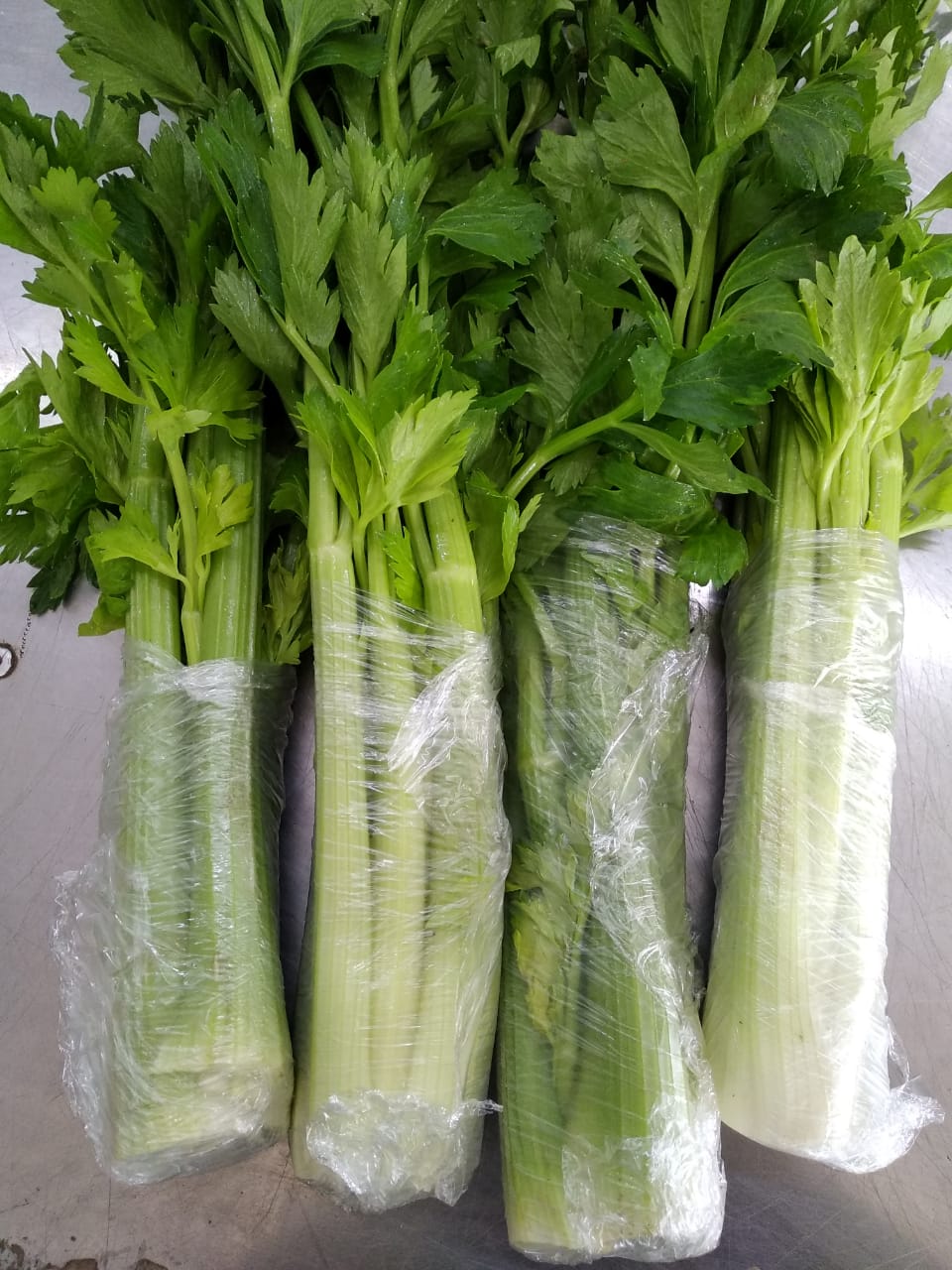
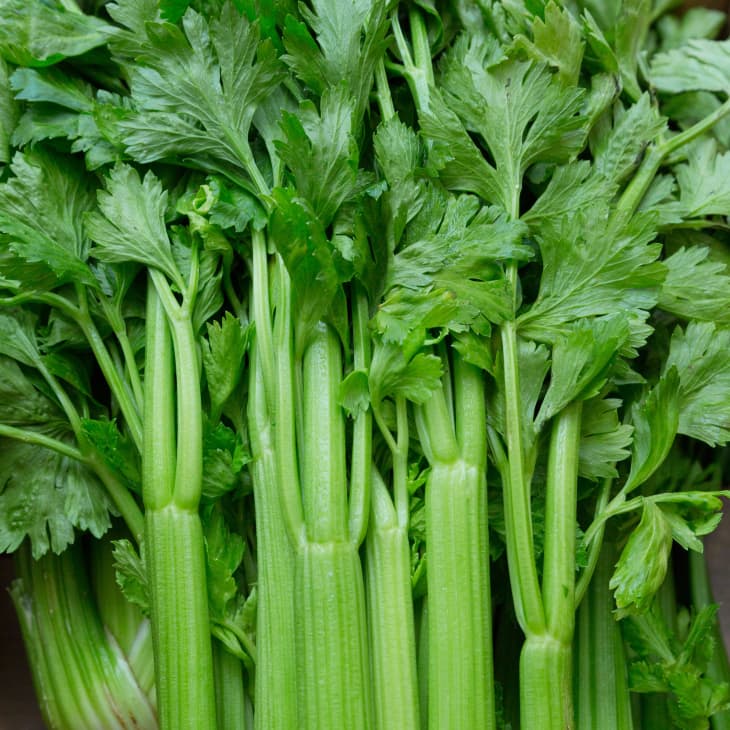
Celery
Enjoy celery raw. Both the stalks and the leaves are edible. Remove the stringy parts if you find that the stalks are too tough.
Instead of a supporting role in a dish, celery can be the star.
The best way to cook celery is to make a mirepoix. This is the base of many soups and a bunch of French recipes, and it consists primarily of a 2-1-1 ratio of diced onions, carrots, and celery.
Make celery sticks with dips. For the kids, spread nut butter into the centre of the stalk and place raisins at even intervals
Celery juice adds bright, vibrant flavor without being too sweet. Juice it together with cucumber, kale, and apple for a refreshing juice combination. Also try celery juice in cocktails.
Celery is actually used in a lot of Asian stir-fried dishes since it cooks quickly, but retains a nice crunch. Thinly slice up the celery and stir-fry it.
In a salad, think of celery in the same vein as you would fennel and radishes — it adds a nice crunch and flavor to salads, especially when thinly sliced.
Celery in a soup is assertive enough that it can be the dominant flavor in a pureed soup — especially when tempered with cream.
Celery can even be pickled, roasted, braised or be made into a relish.
Celery leaves are known primarily as a throwaway top to an already underappreciated vegetable — are so often discarded. It’s a real shame. Celery leaves are actually a bonus to their stalks and are delicious, nutritious, and packed with intense celery flavor. Prep them like you would any herb: minced, coarsely chopped, or left in their true, whole-leaf form. Toss the tender leaves with salad greens and vinaigrette. Throw them into stir-fries, stocks, soups, and sauces. Puree them into a flavorful and bright pesto with toasted nuts and Parmesan cheese.
Note: Images are only for illustrative purposes, actual product and colour may slightly differ.
Pairs well with

Celery
If you have any questions, you are always welcome to contact us. We'll get back to you as soon as possible, within 24 hours on weekdays.
-
Shipping Information
Use this text to answer questions in as much detail as possible for your customers.
-
Customer Support
Use this text to answer questions in as much detail as possible for your customers.
-
FAQ’s
Use this text to answer questions in as much detail as possible for your customers.
-
Contact Us
Use this text to answer questions in as much detail as possible for your customers.